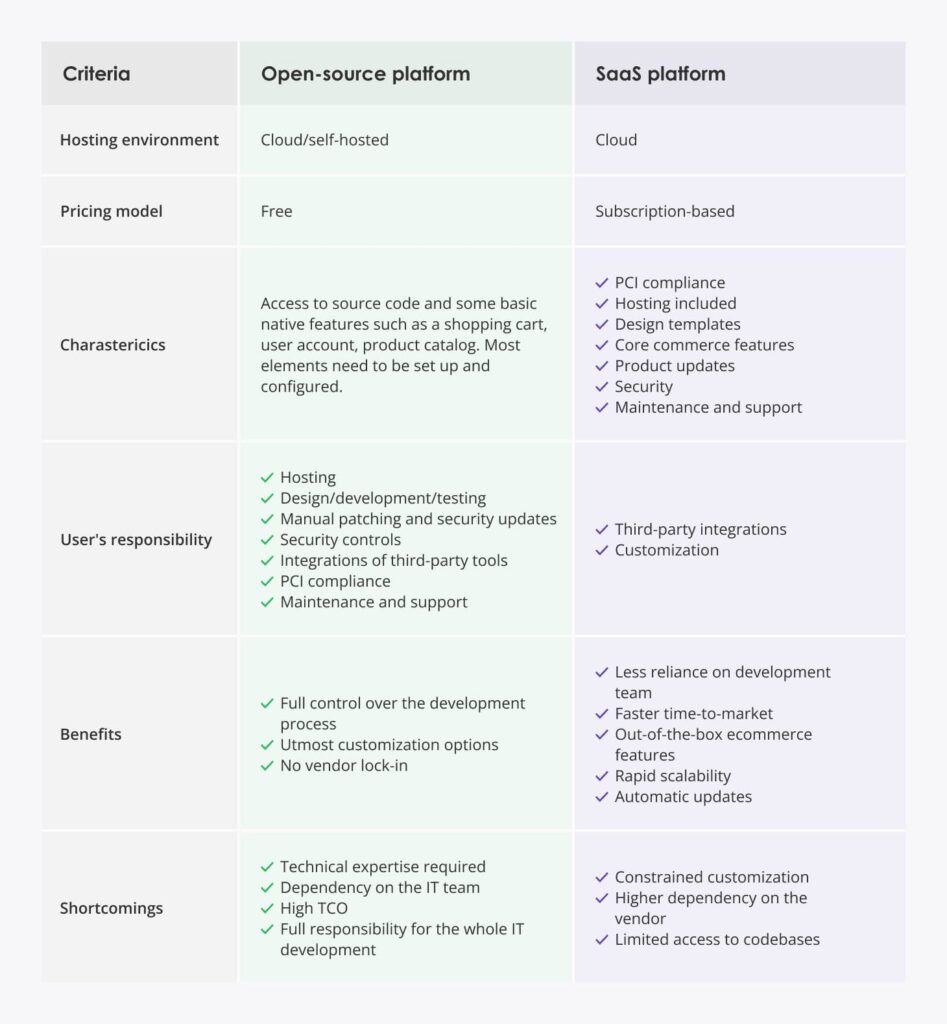Business changes in eCommerce are always difficult to accept, especially if it involves replatforming your large online store containing many users and vast amounts of data. However, there are instances where problems, that your current platform faces, supersede the fear of replatforming.
This practice is essential because it helps improve customer satisfaction, enhance sales, and reduce maintenance costs and burdens on IT teams. Thankfully, there is nothing to worry about either. If you lack an in-house team to oversee this process, consider hiring BigCommerce development services from companies like Edvantis to help with replatforming.
But how do you know if it’s time to replatform your online store? Let’s look at this in detail.
5 Signs You Need eCommerce Replatforming
The signs that it’s time to consider replatforming your site can be either subtle or obvious. And they come from a variety of sources. Those include:
1. Challenges with Cross-Channel Retail Support

Cross-channel or omnichannel retailing is the main shopping option preferred by consumers. Most people now research and buy items online and in-store. Another smaller number of consumers shop through mobile applications and social media. Furthermore, most customers want a seamless transition across various channels without getting in touch with a specific brand or retailer. So retailers must offer the best experience to cope with existing competition across all avenues.
Taking into account all this information, factors that can affect the growth of your eCommerce store include:
- Lack of uniting customer views on different channels
- Inconsistent branding and design experiences
- Controlled data when gathering KPIs on various channels
- Problems merging inventory management on various channels
2. Expensive and Labor-Intensive Customization
Customers want a unique and delightful experience from top retailers. Not all platforms allow vendors to:
- Use innovative features without major design changes
- Set up powerful landing pages for each region or marketing campaign
- Enhance ecommerce design without contacting IT experts
- Introduce an intricate content architecture across multiple platforms
- Implement user-created content, custom cross-sells or up-sells and other income-generating features smoothly
Most see open-source online stores as more customizable. It’s true. However, you must create new features from the start, which results in higher development costs. An affordable option is open software-as-a-service (SaaS) platforms that offer primary commerce features, a ‘base’, and easy integration or customization options through already-built APIs.
Ecommerce platform: open-source vs SaaS

Source: https://www.edvantis.com/blog/ecommerce-replatforming-how-to-prepare-a-business-case/
3. Increasing Technical Debt
The legacy codebase can affect performance benchmarks, therefore, lowering customer experience. The technical debt rises when your development team opts for quick fixes to reduce the development time. As a result, poor coding decisions are made, which leads to performance lags and a jammed code base.
Techdebt leads to:
- High security risks
- Scalability problems
- Slow loading speeds
- Performance lags
- Challenges merging third-party tools
This is also a sign you should replatform.
4. Inadequate Ecommerce Analytics
Ecommerce analytics helps you understand customer behavior which is vital in improving their experience on your site. It gives you important insights into the number of new users, how quickly they bounce and how many pages they visit per session. If your pages are slow to load, this will be reflected in your bounce rate.
Inadequate or limited ecommerce analytics is quite common in various platforms, making it difficult for you to access specific data. They lack pre-made APIs to integrate into your analytics tool and gather the necessary data.
5. Rising Total Cost Ownership (TCO)

Most developers spend a certain amount of their time running legacy systems. Much of the time spent by your team is in handling technical debt and ensuring the old code is running instead of creating new commerce performance.
Due to sub-optimal code reliance, most legacy systems reduce the ability to improve your ecommerce store. Scaling or upgrading can result in system failures or unwanted defects, leading you to unplanned maintenance. Furthermore, you will require more experts to handle the task, increasing the total ownership cost.
How to Replatform Your Online Store
Once you have decided it’s time to replatform your store, your strategy should narrow down to the following items:
- Data migration
- Choosing a new target platform
- Setting up new integrations
- UX/UI improvements
Addressing the fears associated with replatforming, be they psychological or SEO-related, is possible. This is also the general key to a successful project.
For a successful replatforming process, you should follow these steps:
Identify Your Needs
The first step in a successful replatform is deciding what capabilities you need and choosing the right solution to deliver those capabilities. Understand what your current platform lacks and what you need in the new platform. Start by assessing the features you need. As mentioned earlier, the need for additional functionality is the most common driver for a platform migration.
Your ecommerce website could include the following features:
- Several catalogs and price lists
- Product management features
- Custom roles and permissions
- Checkout workflows
Also address other aspects. Do your customers pay on specific terms, and do you need instant credit risk assessment capabilities? Is factoring part of your business model? If so, these are mission-critical features that your solution must include. Also, since many buyers make the same purchases regularly, can your website allow for reorder forms and one-page checkout to make life easier for the customer? Don’t forget important technical features.
Compare Different Platforms

Before migrating your online store to a new platform, you should carry out the necessary comparison to find the perfect one with top features that will make your online store stand out. Make good use of various resources and online platforms that will guide you in finding the perfect platform for your store.
Define a Budget
Defining an adequate budget starts with a detailed market analysis to better understand the solutions within reach. It is also important to challenge the various publishers after having defined an objective and the budget allocated to achieve it because the cost of the platforms remains an issue. From this point of view, an integrator will know how to make his client benefit from his expertise in this field and his objectivity in choosing preferential solutions.
Choose the Right Expert for the Job
Finding the right individual or company to handle the replatforming process is essential. Look for people who are familiar with:
- The chosen eCommerce platform
- UX/UI design
- System integrations
- Online store data integration
Conclusion
Reduction in operating costs, interoperable environments, upgradable functionalities… Replatforming, or changing platforms, meets different objectives and has the advantage of addressing all emerchants. Choose the right platform and look for the right expert to assist you in the process. For successful replatforming, consider hiring Edvantis for their immaculate BigCommerce development services.

